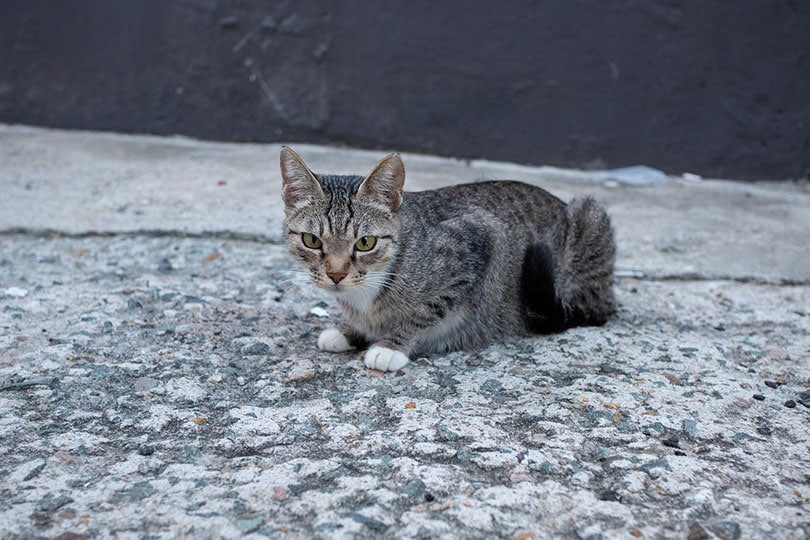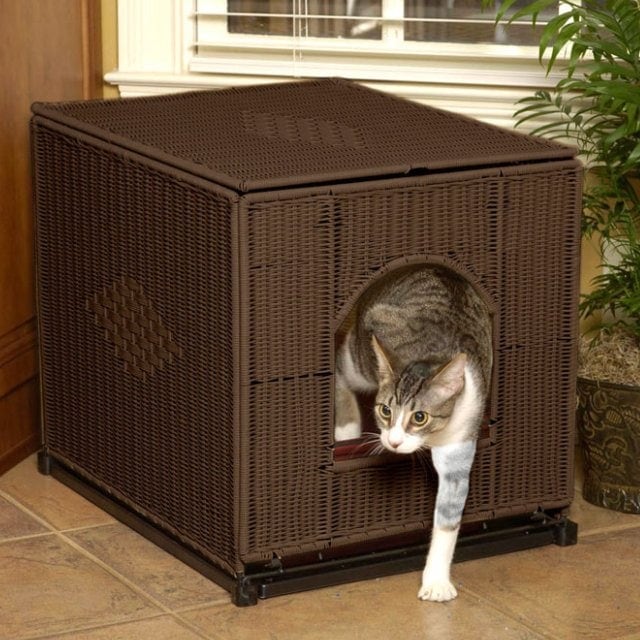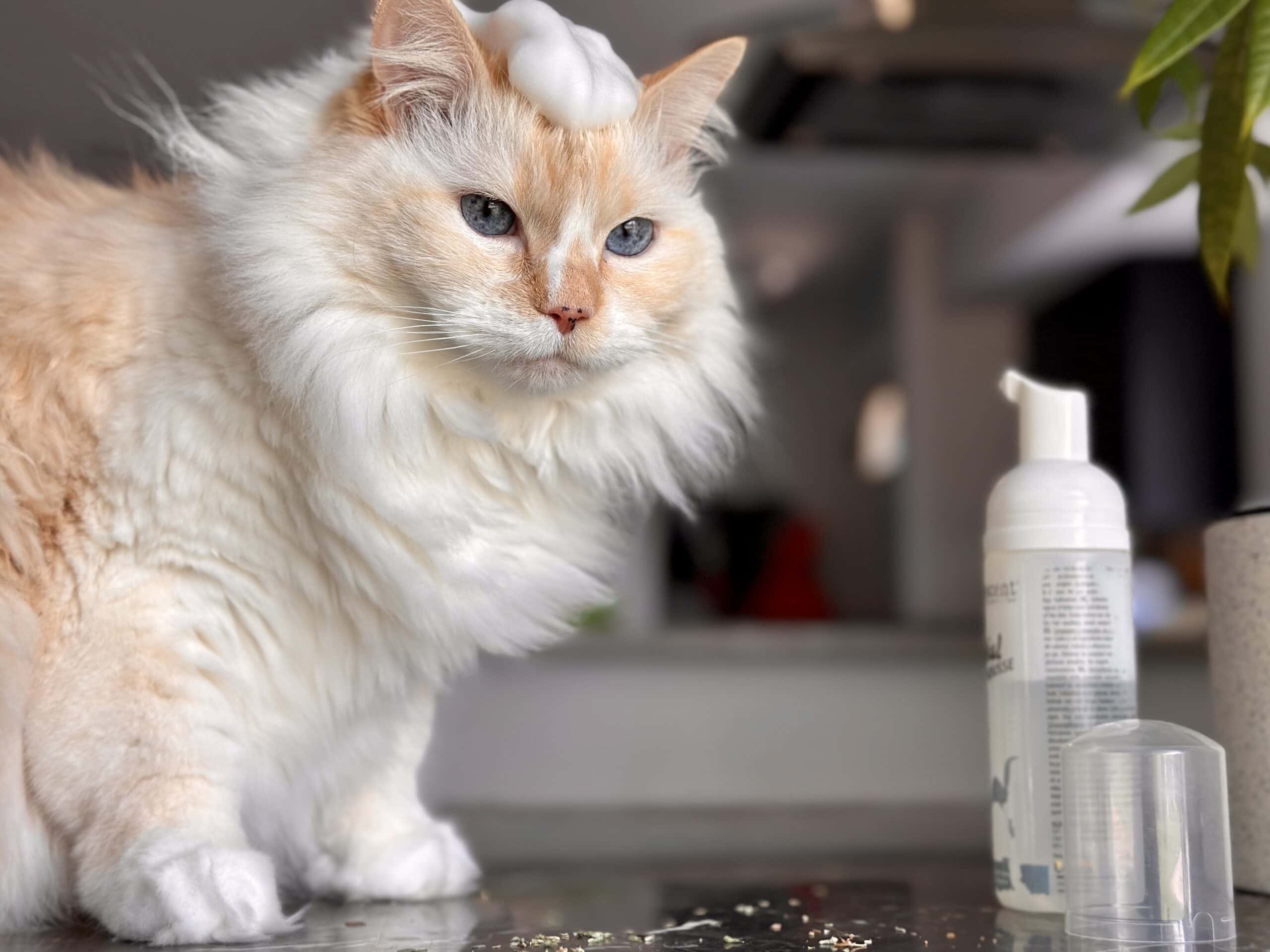What to Do With a Stray Cat That Won’t Leave You Alone: Tips & Tricks
Updated on

Click to Skip Ahead
Neighborhoods of all shapes and sizes have community cats living within them—that is, cats without a home with human companions. These cats are either born in the wild or are lost or abandoned. Either way, they’re out there fending for themselves. So, it may not come as a surprise that stray cats sometimes take to humans that they come across outdoors and work to get their attention, especially if it means scoring food.
So, what do you do with a stray cat that won’t leave you alone? It all depends on the situation and your preferences. For example, you may need to catch them and take them to a shelter. Let’s delve deeper into this topic.
Are You Dealing With a Feral or Stray Cat?
Whether a cat is stray or feral, they’ll undoubtedly come around if there is food to be had. However, feral cats should be handled differently than stray cats in general due to their dispositions. There is a difference between stray and feral cats that is important to know, so you can determine how best to deal with the cat that seems to have “adopted” you.
Stray Cat
Stray cats have been socialized with humans in some capacity, so they know how to get along with them and can even become acclimated to living indoors with them. They may have gone too far away from their homes and can’t find their way back. Their previous owners may have moved away without them or abandoned them. Either way, stray cats once belonged to a human pack of some kind but then became essentially homeless.

Feral Cat
Feral cats have never had close contact with humans. They were born in the “wild” to a feral or stray mother and have no idea what it’s like to live with humans or inside a dwelling of any kind. They don’t know how to relate to humans because they have never done it before. They are unlikely to be able to acclimate to indoor living, as they’d prefer to live outdoors, which is all they have ever known. Therefore, feral cats are typically handled by professionals when they end up staking a claim in a human’s yard in hopes of being provided with food, water, and outdoor shelter.
Tip: Don’t Feed Stray or Feral Cats If You Want Them to Leave You Alone
Feeding a stray or feral cat won’t do you any favors if you don’t want the cat hanging around and bothering you every day. Feeding a stray or feral cat just one time is all it takes to make them stick around and pester you for more food. The best course of action to take if you don’t want a stray cat bothering you or your pets daily is to avoid feeding them unless you’re luring them into a kennel to take them to an animal shelter or until you’re ready to take on the commitment of taking care of a cat’s basic needs.
Handling Tips
Stray Cat

Make sure the cat is actually lost or abandoned, not a neighbor’s indoor/outdoor cat. Talk to the neighbors, and post flyers with a photo of the cat to try to locate the owner. Get online, and post a picture on social media to see if anyone recognizes the cat. File a lost cat report with your local humane society.
If you can get the cat into a carrier with the help of patience and treats, take them to a veterinarian, and have them checked for a microchip. If you cannot lure the cat into a carrier, contact your local humane society or animal control for assistance. If all else fails, you may be able to get a vet or rescue shelter representative to come to the cat for a microchip check.
If you can’t find the cat’s owner, you can provide veterinary care and bring them into your home to start acclimating them as a pet. Immediate vet care is essential, as many stray cats carry diseases. A veterinarian can vaccinate the cat and treat any ailments to ensure comfort and health once settled into your home. You’ll likely have to lure the cat into a kennel to get them to a vet and into your home afterward, like you would for a feral cat.
If you are not able to take in the kitty, you can surrender them to a shelter or a humane society, where they will get the care that they need and hopefully find a forever home. Other agencies that may be able to help you do things like finance foster care, pay for spaying/neutering/vet care, and place the cat in a new home include:
Feral Cat

It’s never a good idea to try to domesticate a feral cat by bringing them into the house to live with you. These cats don’t know how to form bonds with humans and would find it extremely hard to get used to living indoors. They are likely to spend all their time trying to escape and get back outside where they feel most comfortable. They won’t be inclined to hang out on the couch or interact with humans or other pets.
- Pay close attention to the cat’s left ear. If it is tipped (a small portion is clipped off), it means the cat was trapped, spayed, or neutered and then released back into the wild again. If their left ear is not tipped, request a trap from your local humane society so you can trap the cat, have the society spay or neuter them, and then let them loose where you found them. This helps stunt population growth among feral cats in the long run.
- Provide food, water, and shelter somewhere outside of your home where the cat will feel safe yet independent from intrusion from the humans on the property. Commercial food made specifically for cats is best, and shelter can come in the form of a small doghouse, a homemade pallet house, or even a board tilted against a fence.
- Contact a local feral cat group or ask for support referrals from the humane society to get support if you want to relocate the animal to a safer place so you don’t have to commit to lifelong care.
Caring for a Cat That Prefers Living Outdoors
If the stray cat that won’t leave you alone seems healthy and happy and prefers living in the great outdoors, you may choose to care for them like you would a feral cat but in a more intimate way. Start by building them a shelter for protection from weather and predators. You can even use a plastic tub to create an insulated, safe space for outdoor kitties.
Set up a food and water station near the shelter, and put a chair nearby where you can sit and read to start forming a bond with the cat. If the cat is a stray, chances are that they’ll warm up to you and start coming to you for attention. You may even be able to start petting them before long. As long as the cat is thriving, they have protection from the outdoor elements and predators, they are spayed/neutered, and they get food and water daily, they can live a happy life as a “community” cat.
A Quick Recap
Stray cats can live on their own outdoors and find all the resources that they need to survive. However, they can thrive with just a bit of help from humans who live in their community. If you are able and willing to care for a stray cat that you come across, good for you! If you can’t handle the care yourself, you can still help the cat by contacting your local rescue centers for assistance. You’ll still be doing an amazing service that helps support and improve your community overall.
See also:
- How to Catch a Stray Kitten Safely & Humanely: 10 Vet-Approved Tips
- A Stray Cat Comes to My House Every Night: What to Do (Vet Approved)
Featured Image Credit: Masarik, Shutterstock












